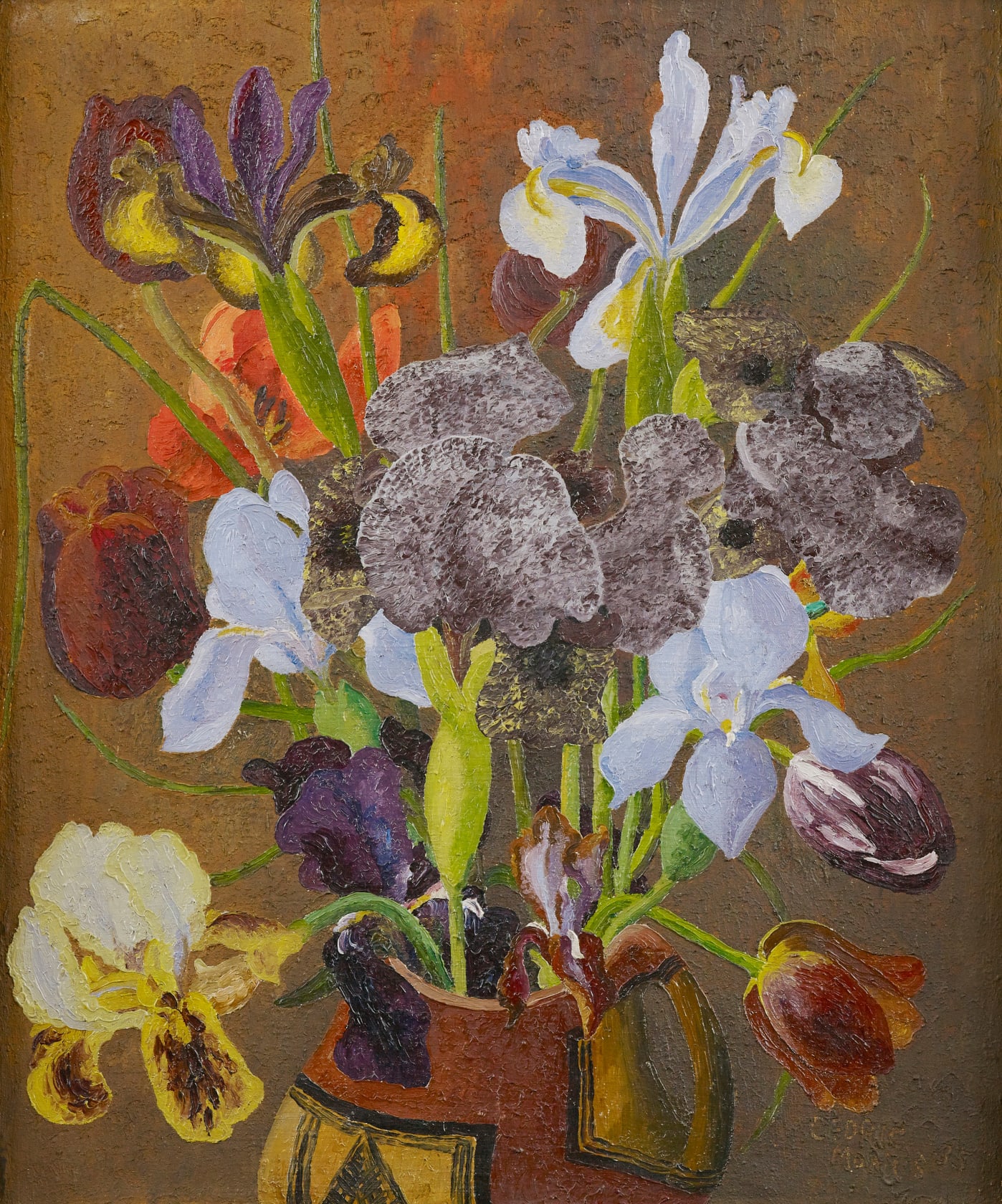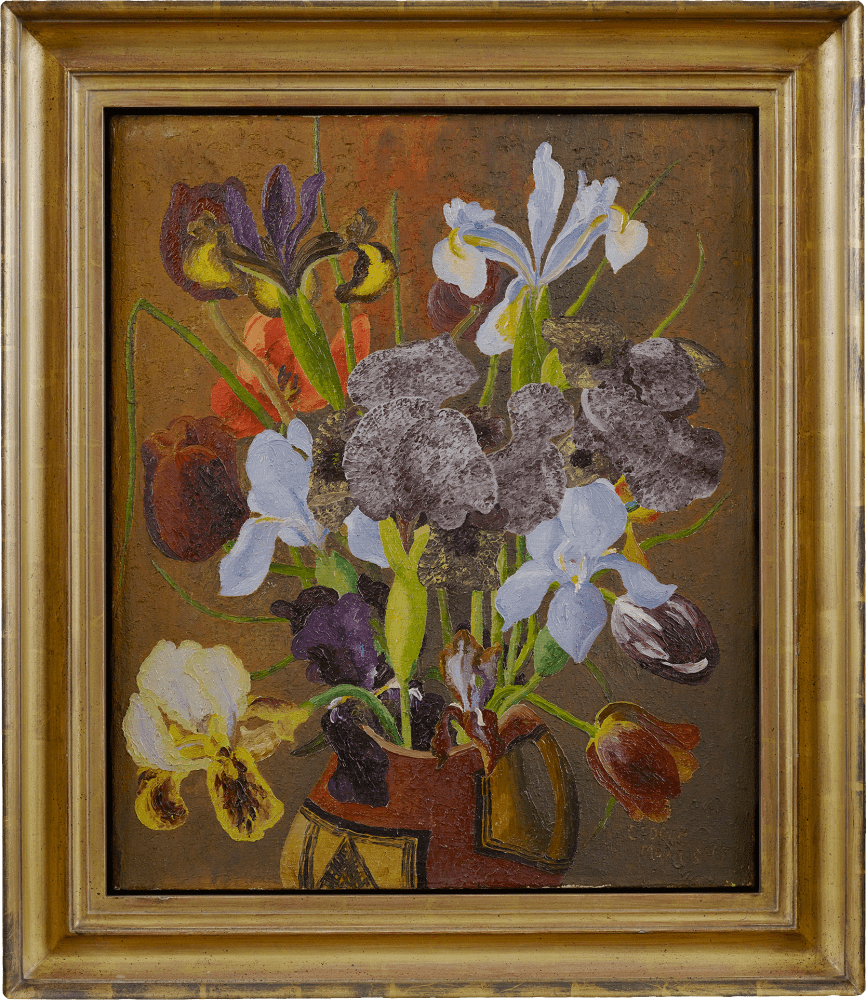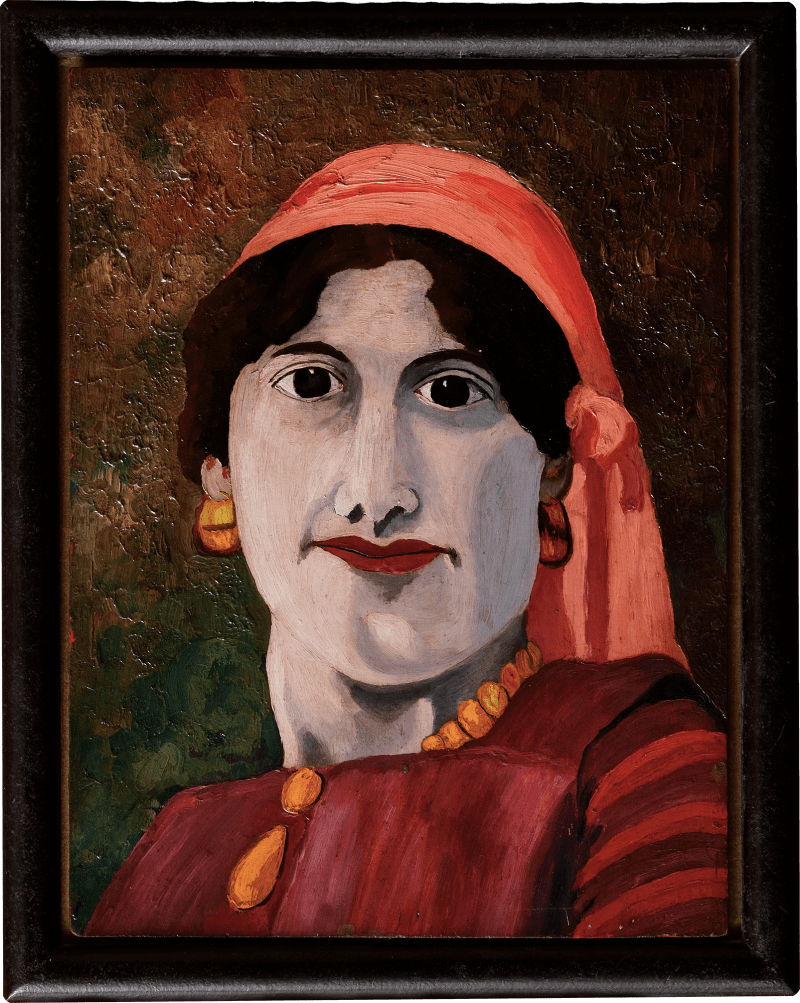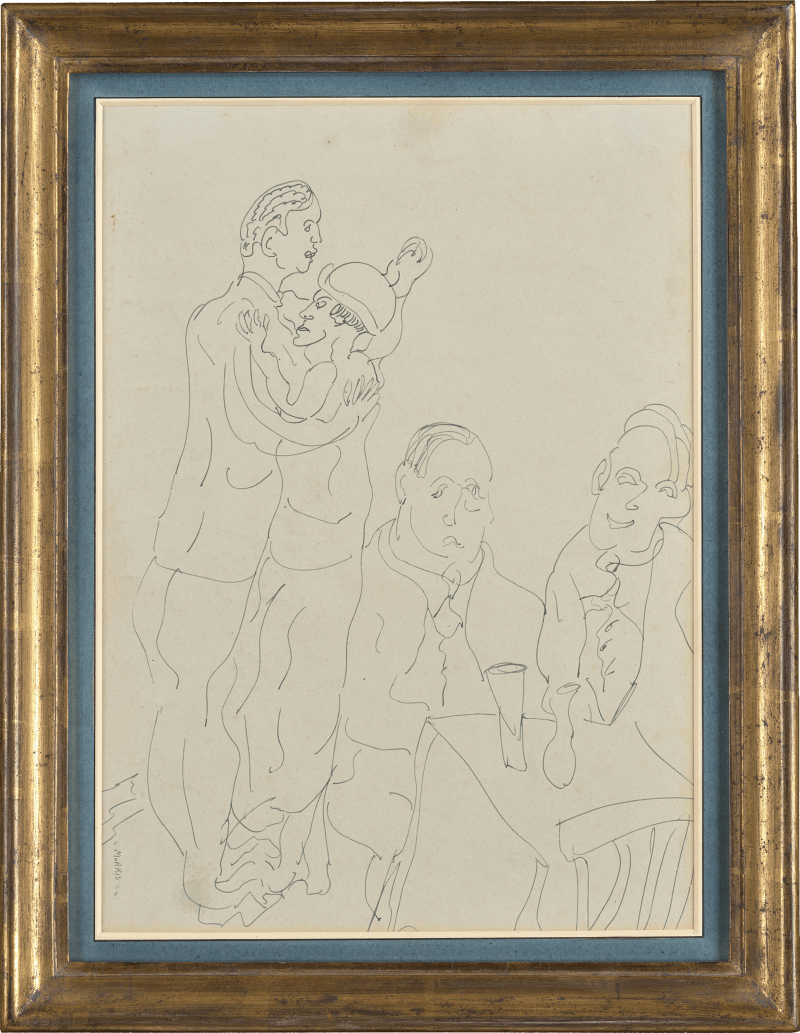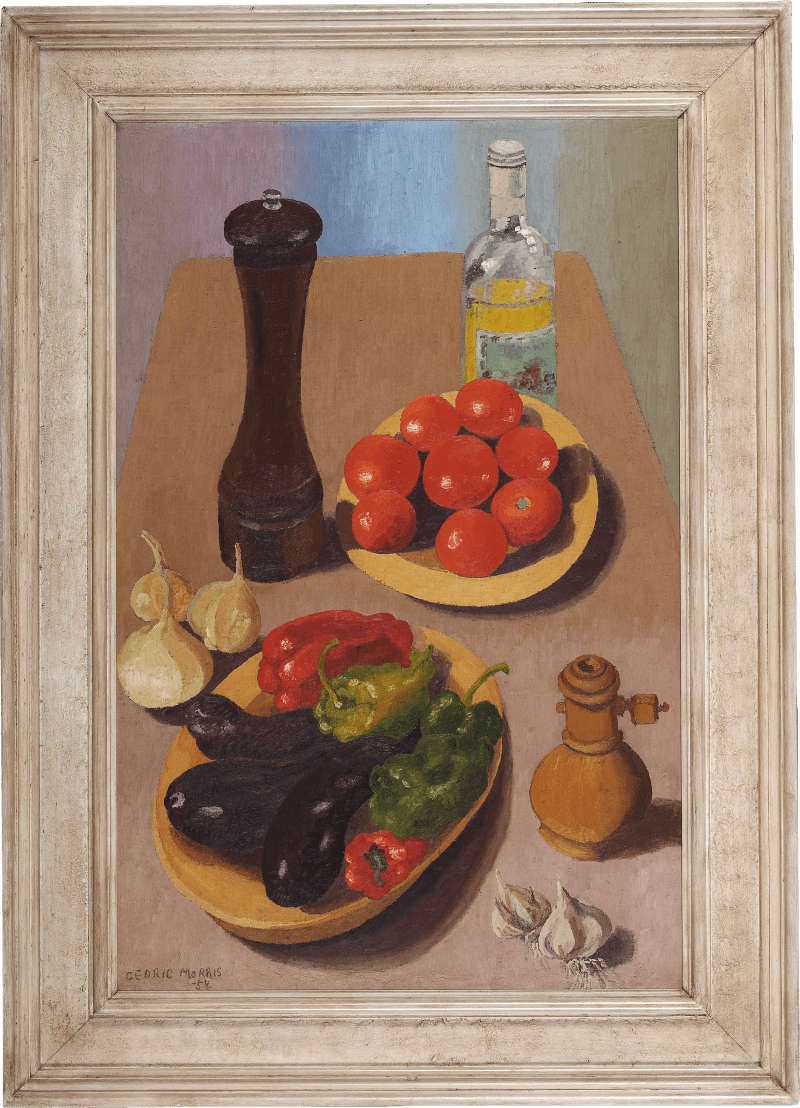For all available works visit philipmould.com
Cedric Morris was one of the greatest flower painters of the twentieth century, and this work, painted in 1935 whilst he was living at The Pound in Suffolk, depicts his favourite subject, Irises.
Morris was, in many respects, as avid a gardener as he was an artist. Preferring to be known as an ‘Artist Plantsman’, Morris’ flower paintings are, in essence, extensions of his lifelong affinity with plants. Naturally inquisitive and exploratory in nature, Morris obtained an extensive knowledge of propagation through his gardening activities subsequently becoming famous for breeding legions of exotic varieties of Irises (a flower not commonly planted in England at the time). It was Morris’ intuition for colour and formal harmony that ultimately informed his painting of flowers. His garden, much like his painting, was primarily motivated by a desire to capture the beauty inherent in naturally contrasting forms and tones.
During the early stages...
For all available works visit philipmould.com
Cedric Morris was one of the greatest flower painters of the twentieth century, and this work, painted in 1935 whilst he was living at The Pound in Suffolk, depicts his favourite subject, Irises.
Morris was, in many respects, as avid a gardener as he was an artist. Preferring to be known as an ‘Artist Plantsman’, Morris’ flower paintings are, in essence, extensions of his lifelong affinity with plants. Naturally inquisitive and exploratory in nature, Morris obtained an extensive knowledge of propagation through his gardening activities subsequently becoming famous for breeding legions of exotic varieties of Irises (a flower not commonly planted in England at the time). It was Morris’ intuition for colour and formal harmony that ultimately informed his painting of flowers. His garden, much like his painting, was primarily motivated by a desire to capture the beauty inherent in naturally contrasting forms and tones.
During the early stages of the 1930s Morris and his lifelong partner Arthur Lett-Haines, or Lett as he was known throughout his life, became increasingly withdrawn from the commercial art scene in London. By this point Morris had already established himself as one of the most sought-after painters in England and yet the fashions and tastes of London began to seem somewhat stifling for an artist drawn to the countryside and the freedom that came with it. In 1929, Morris and Lett took out the lease on a charming cottage in Higham, Suffolk named Pound Farm, or The Pound as it was commonly referred to in Morris’ correspondence. They had given up their Great Ormond Street Studio at the start of the decade and slowly the couple detached themselves from the professional art scene. Morris severed ties with his long-time dealership Arthur Tooth & Sons in 1932 and resigned from the 7 & 5 Society the same year despite having been elected Chairman of the group on 3rdJanuary 1931 by his fellow members including Ben and Winifred Nicholson.
In 1935 Morris and Lett had not yet established the East Anglian School of Painting and Drawing and yet activity at The Pound, in many respects, foreshadowed the creative ethos that came to define the EASPD. It was a place to which artists, intellectuals and fellow gardeners and plantsmen/women flocked to immerse themselves in artistic production, conversation and lively social gatherings. The Pound was very much a bohemian retreat from the confines and demands of the commercial art world. Although it would be Morris’ gardens at Benton End that assured his reputation as one of the most adept and inventive horticulturalists of the time, the one at the Pound was equally revered and admired. Morris began breeding Irises in 1934 whilst at Pound Farm but prior to this he was already an avid and recognised plantsman with an encyclopaedic knowledge of wild flowers. Although the garden at Pound Farm would later be overshadowed by Benton End, it was nonetheless a sight to behold for visiting guests. Flowers, succulents, exotic vegetables and a menagerie of animals including Rubio the Macaw, who would later join Morris and Lett at Benton End, were among the high points visitors could expect to see at The Pound.
Despite the fact that Morris was an immensely prolific painter of portraits, travel works and still lives, it is perhaps his flower paintings for which he is best known. Morris consistently worked from species of plants and flowers that he greatly admired and in almost all instances those which he propagated himself at The Pound and later Benton End. His keen and scientific understanding of plants and flowers informed his approach when he came to paint them. This imbues his painting with a sense of heightened character and individuality particularly when discerning the formal and tonal differences between flowers.
Morris’s reputation as a painter is equalled only by his status as a plantsman. Irises were Morris’s forte, and in this field he gained a considerable reputation as an award-winning breeder, formally registering around forty-five different species and naming about ninety. Some of the better known irises cultivated by Morris include the ‘Benton Menace’, named after his cat, and the ‘Benton Rubeo’, named after his pet macaw. Morris had a studio next to the house, and one ex-student, Joan Warburton, poignantly reminisced how ‘to go in there quietly when Cedric was painting the favourite of all his flowers, Irises, was a revelation.’[1]
[1] Quoted in R. Morphet, Cedric Morris (London, 1984), p.48
